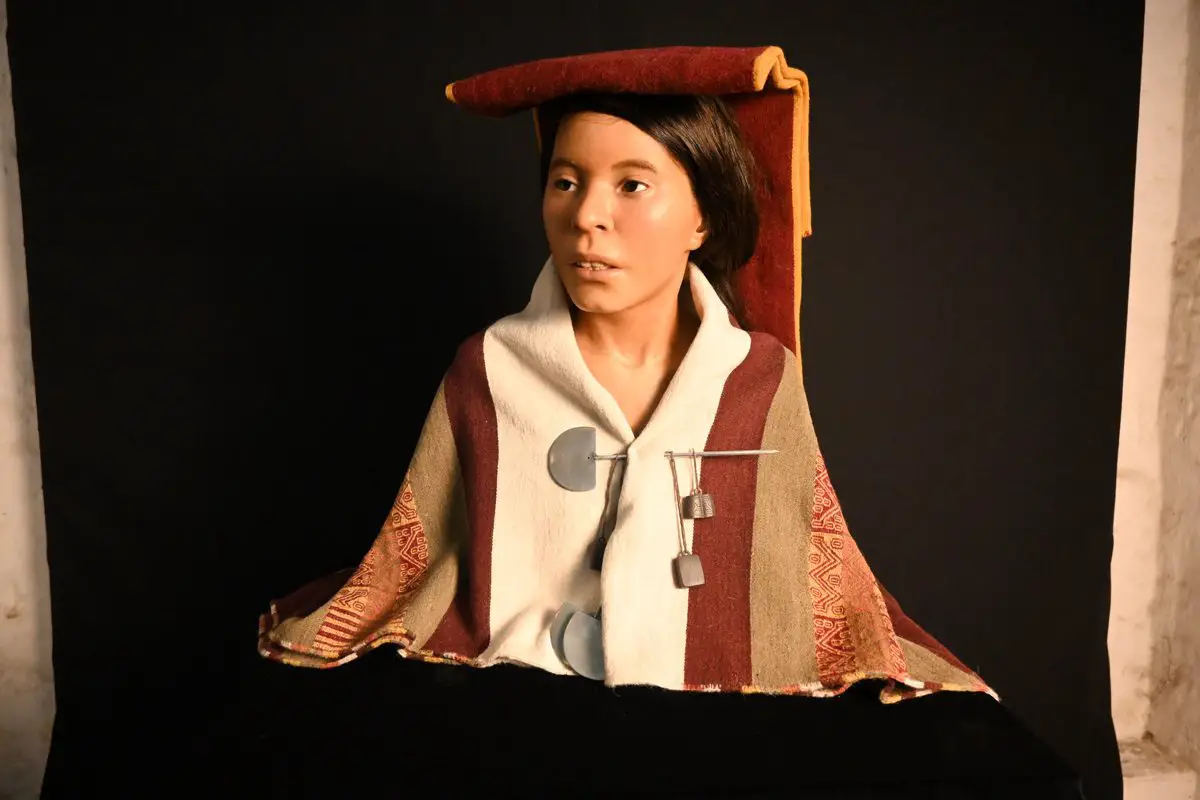Researchers from the University of Warsaw and the Catholic University of Santa María have reconstructed the face of an Inca girl sacrificed near the crater of Ampato, a dormant volcano in the Andes of southern Peru.
The frozen remains of the girl were discovered by archaeologists in 1995 at a height of 6,318 metres above sea level. She was found wrapped in a bundle that had fallen from an Inca site due to recent ice melt. At the time, the researchers name her “Lady of Ampato,” who had been sacrificed on the summit around 500 years ago to the Inca gods.
Child sacrifice, referred to as capacocha or qhapaq hucha, was an important part of the Inca religion. The Inca believed that the sacrificed children do not truly die, but instead watch over the land from their mountaintop perches alongside their ancestors.
Accompanying the girl to the afterlife was 37 funerary offerings, such as aríbalos type containers for liquids, llama bones, small figurines, and ceramics decorated with geometric designs. Also uncovered was preserved food items such as maize kernels and cob.
28 years after the discovery, a team of researchers have reconstructed the girls features in a hyper-realist sculpture. This was done based on the tomography of the body, DNA studies, ethnological characteristics, age, and the girl’s complexion.
The tomographic analysis revealed that the girl was between 13 and 15 years old at the time of death, where she received a blow to the right occipital part of the skull. All this information allowed Dr. Oscar Nilson, Swedish archaeologist and plastic artist, to apply the Manchester technique to construct the face of the Inca girl.
Scientist Dagmara Socha, archaeologist from the team at the Center for Andean Studies in Warsaw, said: “The construction of the face of the Inca girl was very emotional, because it is as if this minor who lived 500 years ago had been resurrected.”
Catholic University of Santa María
Header Image Credit : Catholic University of Santa María








